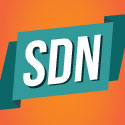The fourth major release of the open source SDN controller focuses on high availability, stability, scale and performance.

The OpenDaylight Project today debuted "Beryllium," the fourth major release of its SDN controller, and the first to be based primarily on "real users, real deployments and real requirements."
"Before, it was a bunch of smart people thinking about what the requirements are and taking a stab. We didn't do badly -- but now we actually have a pipeline," Colin Dixon, technical steering committee chair for the OpenDaylight Foundation, tells Light Reading.
Beryllium focuses on improving the OpenDaylight controller's high availability, stability, scale and performance. Those attributes were also a big part of the previous, Lithium release, but they're the "dominant focus" for Beryllium, Dixon says. (See OpenDaylight Debuts 'Beryllium' Update and OpenDaylight Ships 'Lithium,' Updated SDN Controller.)
The latest release of the SDN controller provides new capabilities for clustering with fault tolerance, as well as scalability. The recommended configuration is to run at least three OpenDaylight machines in a cluster, so that any one can fail and the other two pick up the load. But the software "can scale out to as many NETCONF nodes as you can imagine," Dixon says. And the software supports 1,000-3,000 OpenFlow nodes.
Beryllium adds additional OpenStack integration as well.
The controller is designed for automated service delivery, network resource optimization, visibility and control, regional and metro network automation, cloud, and NFV -- all network management functions characteristic of New IP networks.
Want to know more about SDN? Visit Light Reading's SDN technology content channel.
OpenDaylight has the support of about half of open source SDN contributors, Dixon says. The software has wide support in North America, Europe and Asia, with particular strengths in China and Japan. China Mobile Communications Corp. , China Telecom Corp. Ltd. (NYSE: CHA) and Tencent Inc. are members, with Tencent recently joining as a Silver member. (See Tencent Ups SDN Ante, Joins OpenDaylight.)
In addition to vendor support, OpenDaylight has an active user advisory group, with participation from the California Institute of Technology (Caltech) , Arizona State University, AT&T Inc. (NYSE: T), Comcast Corp. (Nasdaq: CMCSA, CMCSK), Deutsche Telekom AG (NYSE: DT), Nasdaq, Credit Suisse , T-Mobile US Inc. and Thomson Reuters .
Related posts:
— Mitch Wagner, 


 , West Coast Bureau Chief, Light Reading. Got a tip about SDN or NFV? Send it to [email protected].
, West Coast Bureau Chief, Light Reading. Got a tip about SDN or NFV? Send it to [email protected].
About the Author(s)
You May Also Like











